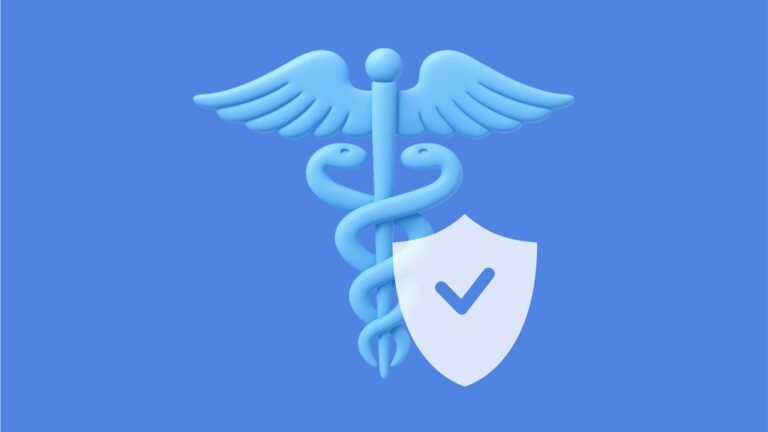Summary Points
-
Data Breach Crisis: In 2024, the healthcare sector faced over 700 data breaches, more than any other industry, exposing over 275 million patient records primarily via password vulnerabilities, highlighting a significant threat to patient safety and organizational trust.
-
HIPAA Compliance Required: HIPAA mandates strict password management practices to protect electronic Protected Health Information (ePHI), necessitating comprehensive policies and training to ensure compliance and mitigate risks associated with breaches.
-
CISO’s Critical Role: The Chief Information Security Officer (CISO) is vital in healthcare settings, where data security directly impacts patient safety, urging security leaders to prioritize effective password management strategies and align technical implementations with clinical workflows.
- Choosing Effective Tools: Selecting a compliant password manager, like Passwork, is essential for healthcare organizations to enhance cybersecurity defenses, maintain HIPAA compliance, and support seamless user experiences while safeguarding sensitive patient information.
Underlying Problem
In 2024, the healthcare sector grappled with an alarming surge of over 700 data breaches, surpassing all other industries, including finance. This distressing trend compromised more than 275 million patient records, with password-related vulnerabilities serving as the predominant attack vector. Compromised credentials were found to be the most persistent and damaging entry points for threat actors, exacerbating concerns about patient and organizational safety. The repercussions of these breaches extend well beyond financial ramifications; they disrupt patient care, threaten safety, and significantly erode public trust in the healthcare system. According to the American Hospital Association, since 2020, approximately 590 million medical records have been affected, reflecting a pervasive breach landscape that impacts nearly every individual in the United States.
The reporting on these breaches underscores a dire need for healthcare organizations to rethink their approach to cybersecurity, particularly in the realm of password management, as delineated by the Health Insurance Portability and Accountability Act (HIPAA). The CISO role in healthcare has evolved, emphasizing that information security is intimately tied to patient safety, as faulty information could have lethal consequences. While HIPAA provides a framework for protecting electronic Protected Health Information (ePHI), many organizations struggle to actualize these guidelines into effective practices. The solution lies in adopting robust password management tools, such as the Passwork password manager, which not only supports compliance but also enhances operational efficiency and user accessibility—reducing vulnerabilities while meeting both technical and administrative safeguards essential for safeguarding sensitive data in this high-stakes environment.
Risk Summary
The staggering rise in data breaches within the healthcare sector, which surpassed 700 incidents in 2024 alone, poses a profound risk not only to healthcare organizations but also to ancillary businesses and users who are interconnected within this ecosystem. With over 275 million patient records exposed—often through compromised credentials—there exists a ripple effect that can destabilize the reputation and operational integrity of related organizations, including insurers, fintechs, and third-party service providers. Such breaches can lead to significant disruption in service delivery, incite regulatory scrutiny, and erode the foundational trust upon which patient-provider relationships are built. Furthermore, the enduring implications of these incidents, particularly under HIPAA’s stringent compliance regulations, could subject impacted organizations to hefty fines, potential criminal prosecutions, and an irrevocable stain on their reputations. The multifaceted nature of these cybersecurity threats underscores the imperative for all stakeholders to implement robust, compliant password management strategies, aligning security practices with operational realities to fortify against common vulnerabilities that could potentially jeopardize their viability and that of the broader healthcare landscape.
Possible Remediation Steps
In the realm of healthcare, safeguarding patient data is paramount, especially after a significant breach impacting 275 million records. Timely remediation is crucial not only to protect sensitive information but also to maintain trust and compliance with regulatory standards.
Mitigation Steps
- Immediate Password Audit
- Implement Multi-Factor Authentication
- Update Password Policies
- Deploy Advanced Encryption
- Conduct Employee Training
- Establish a Breach Response Plan
- Implement Monitoring Tools
- Review Access Controls
Summary of NIST Guidance
The NIST Cybersecurity Framework (CSF) emphasizes the importance of recovery and resilience in cybersecurity practices. Specifically, the SP 800-53, which details security and privacy controls, should be consulted for comprehensive guidance on safeguarding against such breaches and enhancing overall data security.
Explore More Security Insights
Explore career growth and education via Careers & Learning, or dive into Compliance essentials.
Learn more about global cybersecurity standards through the NIST Cybersecurity Framework.
Disclaimer: The information provided may not always be accurate or up to date. Please do your own research, as the cybersecurity landscape evolves rapidly. Intended for secondary references purposes only.
Cyberattacks-V1

